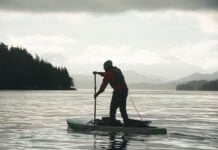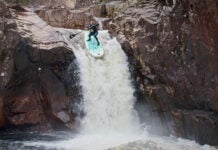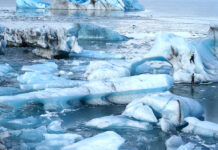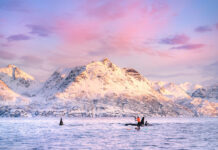Wonder and curiosity struck me the first time I set my eyes on photographer Steve McCurry’s image of four stilt Sri Lankan fishermen back in 1995.
The very act of fishing while perched atop a single pole was so foreign to me. It’s one of many travel photographs that remains with me and fuels my inner wanderlust.
For years, intrepid travelers skipped over the small island of Sri Lanka in favor of bustling India or the jaw-dropping atolls of the Maldives.
Following a 30-year civil war, it’s only the last 10 years tourists have landed in the busy hub of Colombo and trekked deeper into the rolling hillsides, exploring centuries-old Buddhist temples, tea plantations and wildlife sanctuaries.
Now it’s one of the top emerging travel destinations. As a photographer, I do oodles of research into a destination before my bags are packed.
As I dug deeper, I realized for an area the size of Ireland, Sri Lanka seemed to offer more outdoor and cultural experiences than many other places I’ve visited.
Most of the decades-long civil war concentrated in the north and interior of the island, but the 2004 Indian Ocean earthquake and resulting tsunami decimated the southern coast.
Livelihoods tightly woven into the tides were torn apart, buildings and boats close to the ocean were destroyed, people lost their loved ones, and the rest of the world scrambled to provide aid to the beach communities in the south.
One of the many acts of kindness came from small fishing towns throughout the Netherlands, like the famous herring city of Vlaardingen, which donated fishing boats to coastal fishing families so they could sustain themselves.
These colorful boats sparked my curiosity—on closer look they are adorned with the names and locations of the donors.
As the morning sun rises over the horizon, this particular little spot on the south coast lights up as the fishermen’s boats full of color and texture contrast the clear Indian Ocean.
The bay is shallow, fringed by a massive reef protecting the boats during large swells, and also funneling a right-handed wave perfect for long boarding and SUP surfing. Photographing the ocean, and particularly a coastline with a shallow reef, provides the opportunity to fly a drone and offer a unique perspective.
Though the drone is cumbersome when traveling and I only pull it out occasionally, all the hassle is worthwhile when I get back and see the images.
Travel adventure photography is more than just the photo. It’s the people, sounds, smells and culture, all wrapped up in a digital capture. One of the first days we surfed this wave, we exited to the beach as the fishermen were returning from a night’s outing.
Rama, who seemed to captain a vessel, came over with his big welcoming smile and introduced himself. He offered us some fresh catch and we sat and spoke with him for the better part of an hour.
He explained what had happened to the families after the tsunami, answered our queries about the unique names of the local fishing boats, and became a friendly face on our surf sessions down at what we took to calling Fishermans.
With my own photography, I hope to strike a little wonder in the viewer’s eyes, inspiring someone else to book a ticket, travel a little deeper and snap an image you’ll never forget.
Cory Leis is an adventure and travel photographer based in Whistler, British Columbia. | Feature Photo: Cory Leis








